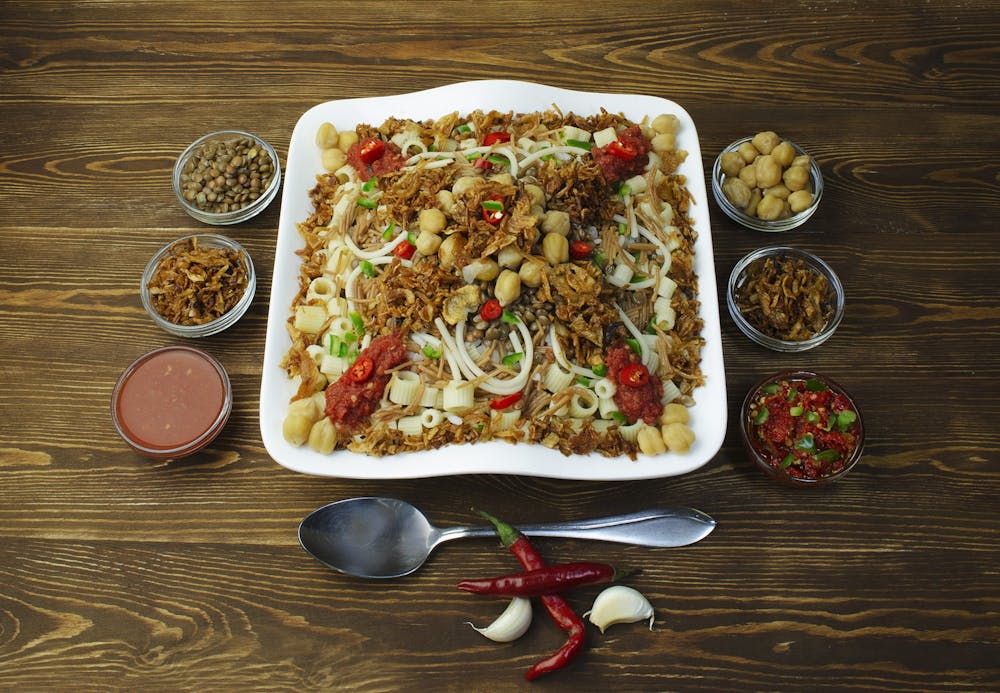The Kluge-Ruhe Aboriginal Art Collection of U.Va. and the Fralin Art Museum partnered on Nov. 12 to present the most recent installment of THE ART IN LIFE — “a series of programs that explore the artistic creativity, innovation, challenges and aesthetic decisions of practices that usually aren’t considered fine art.” This virtual session explored the art of food — its plating, styling and how that contributes to its enjoyment — and featured the perspectives of four dynamic panelists.
The virtual program began with introductions from each of the unique guests on the panel. Arley Arrington, the owner of Arley Cakes in Richmond began the discussion, speaking from experience in a company that specializes in creating delicious cakes highlighting social justice issues happening in the world and advocates for social change. The inspiration for this take on the classic bakery came from Arrington’s professional background.
“I was working at a local nonprofit and waitressing at a restaurant in Charlottesville,” said Arrington. “I wanted to combine these two worlds.”
The panel also featured Elle Simone Scott, a food stylist and test cook for America’s Test Kitchen, whose work has been featured in media outlets such as Food Network and Food Network Magazine. As a food stylist, she creatively presents food through plating and styling to be ready for television.
“The goal of my food is that it’s tasty, affordable, an experience that [people] can have and share in life,” commented Scott, “and food styling does that for me.”
Charles Spence, an experimental psychologist at the University of Oxford, was the third panelist. Spence has conducted experiments to scientifically measure how the visual appearance of food affects one’s enjoyment of it. Specifically, he has analyzed the direction of food, amount of food, its overall presentation and how that alters our perception of what the food tastes like.
The final panelist of the virtual event was Craig Thornton, the founder of wolvesmouth — a visual intersection between food and art that seeks to create an interactive culinary-sensory experience. A dish that Thornton specializes in is “Wolves in the Snow”, a tasty venison dish displayed as a kill scene on the forest floor. Thornton explained how guests enjoy the meal in a room designed to offer a sensory experience of a pine forest. In this way, Thornton aims to create a food experience similar to performance art.
The highlight of the event consisted of a stimulating discussion about the extent to which the enjoyment of food is visual, olfactory and related to taste.
“What we taste is what is going on in the tongue,” Spence said. “What we see is not part of flavor, but is core to how we think about food— the more attractive [food is], the better it tastes.”
Scott had a different take on the topic, explaining that even though the way that food is presented is an important aspect of its perception of taste, the presentation has to be accurate to the quality and taste of the food.
“In an age where visual is everything, as a consumer I want to be told the truth,” Scott said. “[The food] looks pretty but has to taste amazing — I don't want to be lied to.”
Arrington also offered some insight into the artistic potential of food because of the ability it has to be political. She noted that after she decided to make her company and cakes about inspiring social justice, she lost customers but ultimately gained more because of the messages of social equality she was promoting. For Arrington, the importance of making this political agenda the forefront of one’s business and promoting these issues by using food combines to make a beautiful, meaningful statement.
Later in the night, the event was marked with a discussion on how community affects our experiences with food. Scott touched on the importance of being true to the culture that a recipe comes from.
“We should be representing recipes from a plethora of cultures [while] not putting a Eurocentric twist on them,” Scott said. “Being true to the culture that the recipe comes from [and] being respectful of how you represent cultural recipes is critical.”
“BIPOC communities have to represent their own food. It’s the most honest way to do it,” Scott said.
The event ended on an insightful note about the intersection between food and art, saying that the real beauty in food is not only how it is presented — it is the genuine connection that different groups feel toward it that makes food truly a work of art.







